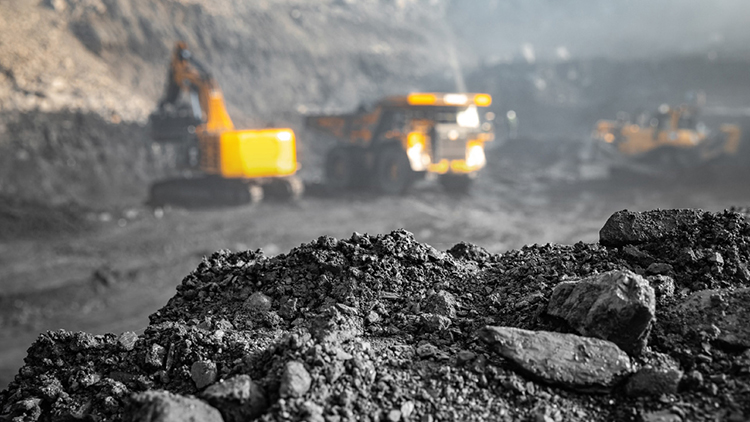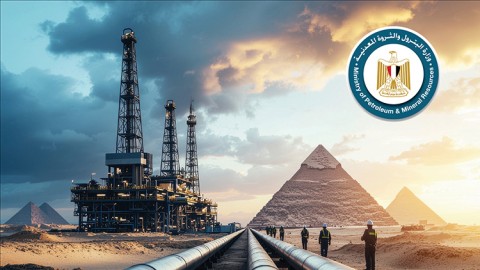Coal is a black or brown rock that is often flammable and combustible. It is found in ground layers or veins. It consists mainly of carbon, in addition to varying proportions of other elements (mostly hydrogen, sulfur, oxygen, and nitrogen.
Coal is indispensable because it is used in most industrial fields, and its most important uses can be explained in the following points:
Steel production: Coal is used in the iron industry through the formation of coke, which in turn converts iron ore into steel.
Local use: It is used in some developing countries and extremely cold regions as fuel for cooking food and as a source of heat as well.
Liquefaction: This is the process that converts coal into industrial gas, consisting of a mixture of carbon monoxide and hydrogen, so that it can be converted into methanol gas and urea fertilizer.
Odor absorption: It is used as a repellent of unpleasant odors, so it is recommended to put a piece of it in the refrigerator to absorb unpleasant odors that may result from some goods.
Medical uses: It can be used to remove dental tartar.
It is used as fuel for trains: In previous decades and in developing countries, coal was used as fuel for trains.
Construction: Coal can produce carbon fibers, which are important in the construction process and are also used in the manufacture of tennis rackets.
The benefits of coal can be stated in the following points: It is a continuous fuel source, unlike intermittent energy sources, such as wind and solar energy. There are huge reserves of coal that can be used for a future period of up to 200 years and the reserves are estimated at 1 trillion tons. It is characterized by low costs, as it is a non-renewable energy source that does not require high extraction and conversion costs, unlike other non-renewable sources. The possibility of converting it to other less harmful products, such as converting it into a liquid or gas, which limits the production of ash due to combustion processes.
As the most polluting types of fossil fuels approached the finish line, coal returned to power plants again, as a result of increased energy consumption, due to the lack of generating capacity and the Russian-Ukrainian crisis, at a time when some countries around the world began to establish new generating stations. In light of the continuing energy crisis affecting many European countries announced that they will resume their operations to generate electricity using fossil fuels, to face the upcoming winter.
News about the expansion of the use of coal to generate energy is considered “alarming” by environmental organizations, which describe generating energy from coal as “the dirtiest and most polluting method for the environment. The use of coal leads to an increase in carbon dioxide emissions by about 70% compared to natural gas, and this contradicts the state’s declared policies and legal frameworks, which visualize an economic development program that is less dependent on carbon and the use of cleaner production technologies.
Coal pollutants are responsible for lung cancer, blood leukemia, immune system damage, all respiratory system diseases, fetal deformities, and persistent nervous system diseases. It is the fuel of the bygone era, and countries have dropped it from their calculations despite the oil and gas crisis. Coal extraction is considered dangerous at all stages. Treating it when extracted, during its transportation and storage, and before and after burning it, and making it environmentally friendly is an unattainable dream. The price of coal continues to decline despite the rise in the prices of other types of fuel.
Coal usage poses numerous hazards, from mining operations to its final consumption. It is typically transported by trucks from mines to steel casting factories and power stations. However, coal is transported in solid form rather than ground to avoid the risk of dangerous gases being released, which could cause explosions or fires during transit. Ground coal poses a higher risk of gas escalation, leading to conveyor capsule explosions. Additionally, transporting ground coal is more technically expensive.
It is important to address a common misconception: coal is often viewed as a passive raw material, simply a mass with physical weight. In reality, coal is a chemically active substance, and its activity continues even after burning. Its components are not chemically stable, making it highly hazardous. The dangers of coal are comparable to toxic substances such as mercury, lead, sulfur, cadmium, cesium, carbon, copper, and others, all of which pose significant risks to the surrounding environment during transport.
The process of grinding coal is one of the most dangerous for both the environment and human health. It is considered one of the most sensitive stages of coal usage due to its significant impact on workers throughout all phases of transportation and processing. The danger lies in the difficulty of performing the grinding in closed environments, as the high temperatures and the release of gases can lead to rapid explosions and combustion. A major risk is the elevated temperature of the coal, caused by burning, which generates active gases and vapors that are difficult to control in a confined space isolated from the surrounding environment.
Demand for coal remains strong, driving economic development in emerging markets. However, in the pursuit of a more sustainable future, many countries are taking steps to reduce dependence on fossil fuels, especially coal. Overcoming obstacles in this transition has proven challenging, particularly due to the reliance of coal industry workers on the sector for their livelihoods. Nonetheless, with the right policy tools and legal measures, these efforts can be supported. Green investment, technological advancements, and appropriate legislation will help curb coal use and accelerate the shift to cleaner energy sources as economic activity normalizes. Well-crafted policies can also ease the burden of transition for coal miners and others dependent on the industry.
Eng. Mohamed Abdelraouf
Southern Area Gen Mgr
Khalda Petroleum co








